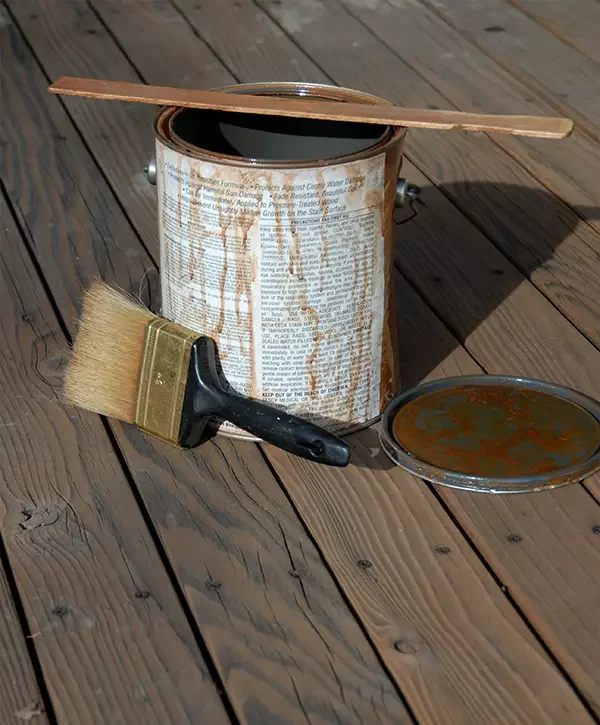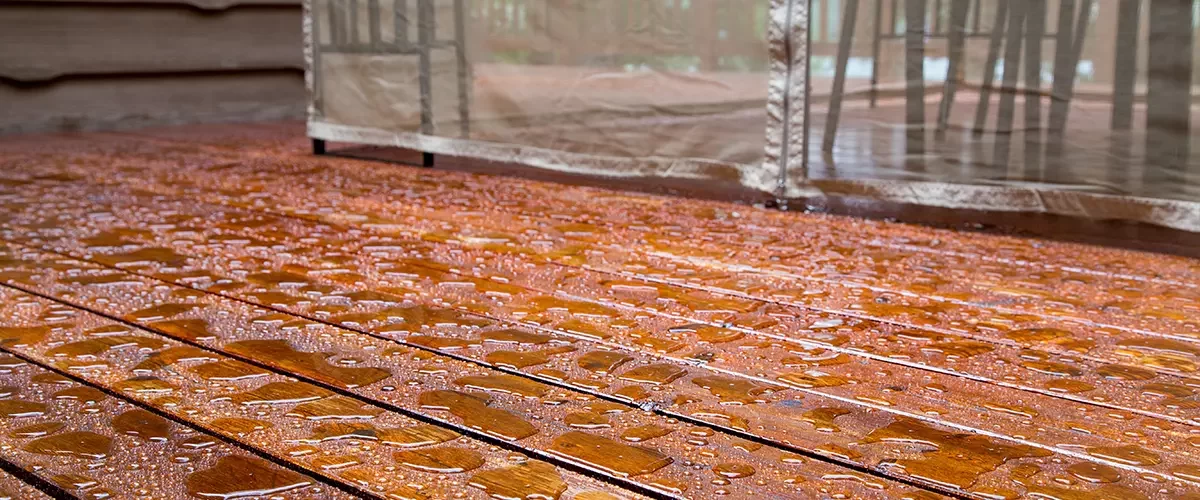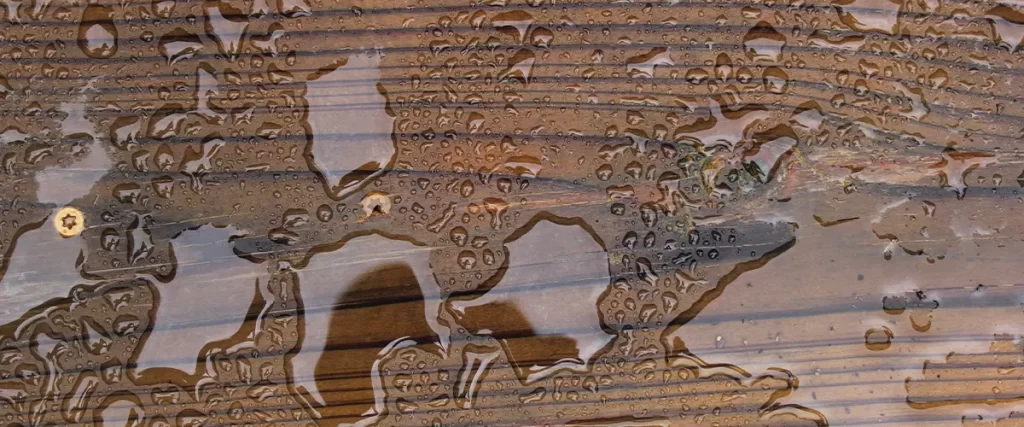Deck Sealing In Omaha, NE
Make your deck in Omaha 100% waterproof with a quality deck sealing project done by one of the best carpenters in Nebraska.

Deck sealing is crucial for preserving the integrity of a deck’s wood materials. Whether it’s cedar, pressure treated wood, redwood, or any other type of wood material, decks need to be sealed so water does not penetrate the wood and cause damage to the material. Exposure to UV rays, rain, snow, and fluctuating temperatures can lead to wood deterioration, fading, and mold or mildew growth. This is where sealing comes in and creates a protective barrier, preventing moisture penetration and minimizing the harmful effects of sunlight.
While pressure washing a composite deck takes about 5 minutes, sealing an entire deck takes quite some time. If you can’t afford to waste some precious hours, you can get a pro that gets the job done on time, on budget, and with a nice warranty that comes with it.

Get A Transformative Deck Sealing Experience
- Efficient sealing, staining, and painting
- Fast and transparent quotes
- A reliable team of experts
- A smooth deck sealing process
- Best deck sealers on the market
- In-depth deck inspection
3 Main Reasons Why You Need To Seal Your Deck
Protection Against Moisture Damage
UV Ray Defense and Color Preservation
Prevention of Mold and Mildew Growth
At Deck Bros, our top priority is providing you with a deck sealing process that protects the natural wood grain of your deck for years to come. Don’t hesitate to contact us at (402) 369-5724 for your decking needs in Omaha, NE, or surroundings.

Best Wood Deck Sealer On The Market In Nebraska
Thompson's WaterSeal Advanced Natural Wood Protector
Thompson’s WaterSeal is popular for protecting decks against water damage and UV rays. It helps to prevent water absorption and provides a clear finish that enhances the natural beauty of the wood. It is suitable for pressure-treated and cedar wood use, making it versatile for various deck materials.
Cabot Australian Timber Oil
Cabot’s Australian Timber Oil is well-regarded for its ability to enhance the natural color and beauty of wood while providing excellent protection. It is a penetrating oil-based formula that offers water repellency and UV resistance. This type of sealant is suitable for hardwoods commonly used in decks and can withstand the weather conditions in Nebraska.
Behr Premium Waterproofing Wood Finish
Behr is known for its high-quality wood finishes, and their Premium Waterproofing Wood Finish is designed to protect against the elements. It provides a durable, waterproof seal that helps resist cracking, peeling, and mildew growth. Behr offers various color options, allowing you to customize the appearance of your deck.
It’s important to note that, like deck stains, sealants come in different types, and not all of them will work for your deck. Between water based sealants, oil based sealants, clear sealants, semi-transparent sealants, solid color sealants, penetrating sealants, and others, you’ll need a pro to help you pick the right one.
Deck Sealing Cost In Omaha
- Deck Size and Complexity
- Type of Wood Deck Sealer
- Brand of Sealant
- Deck Condition
- Labor Costs
- Local Market Prices
- Seasonal Considerations
| Method | Cost Per Square Foot |
|---|---|
| Stain & Seal | $0.50 – $1.50 |
| Power Wash, Stain & Seal | $1.00 – $2.50 |
| Power Sanding, Stain & Seal | $2.00 – $4.00 |
| Strip, Stain & Seal | $2.50 – $5.50 |
| Painting | $2.00 – $5.00 |
| Railings & Handrails | $4.00 – $12.00 |
Discover the convenience of working with Deck Bros – a hassle-free solution for deck maintenance in the Omaha Metro. Our comprehensive deck sealing service handles everything, allowing you to unwind and enjoy the renewed beauty of your deck.
FAQs About Deck Sealing In Omaha, NE
Prolong Your Deck’s Life With A Quality Deck Sealing Project

Discover a seamless and delightful deck sealing experience with Deck Bros, serving Omaha, NE. Instead of investing your precious time in deck sealing, why not sit back, relax, and let us handle it for you? Rest assured, we guarantee a stunning end result that comes with a comprehensive warranty to safeguard your investment.
If it’s about time you refresh your wood deck, contact us at (402) 369-5724 or click the button below to send a message or find out more about your upcoming deck sealing project.
